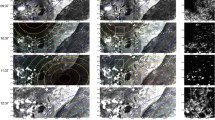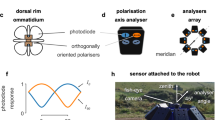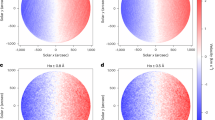Abstract
EARLIER observations of the polarisation of the sky light during solar eclipses do not agree1. New observations were undertaken in connexion with my polarisation measurements of the solar corona. I observed, during the 1932 eclipse at Gray, Maine, a point of the sky at a distance of 8° from the sun at mid-totality. A Martens polarisation photometer was used, mounted rigidly. The sky was perfectly clear. Whereas comparison curves obtained on several days before and after the eclipse show smooth curves, the polarisation curve of the eclipse day reveals a considerable increase of polarisation during totality. These measurements were repeated during the 1934 eclipse observed at Losap Islands, in the South Seas. Again a point was observed at a distance of 8° from the sun at mid-totality. A half-shadow polarimeter was used. The sky was perfectly clear. The results obtained show again the increase of polarisation during totality against the comparison days.
This is a preview of subscription content, access via your institution
Access options
Subscribe to this journal
Receive 51 print issues and online access
$199.00 per year
only $3.90 per issue
Buy this article
- Purchase on SpringerLink
- Instant access to full article PDF
Prices may be subject to local taxes which are calculated during checkout
Similar content being viewed by others
References
H. H. Turner and H. F. Newall, Proc. Roy. Soc., 57, 346; 1900. H. F. Newall, Mon. Not. Roy. Astron. Soc., 66, 475; 1906. N. E. Gilbert and J. J. Few, Publ. U.S. Naval Observ., 4, IV, D 218; 1906. N. E. Gilbert, ibid., 10, B 192; 1926.
W. M. Cohn, Z. Phys., 75, 544; 1932.
Author information
Authors and Affiliations
Rights and permissions
About this article
Cite this article
COHN, W. Polarisation and Spectrum of the Sky Light during the Total Solar Eclipses of August 31, 1932, and February 14, 1934. Nature 134, 99 (1934). https://doi.org/10.1038/134099a0
Issue date:
DOI: https://doi.org/10.1038/134099a0



